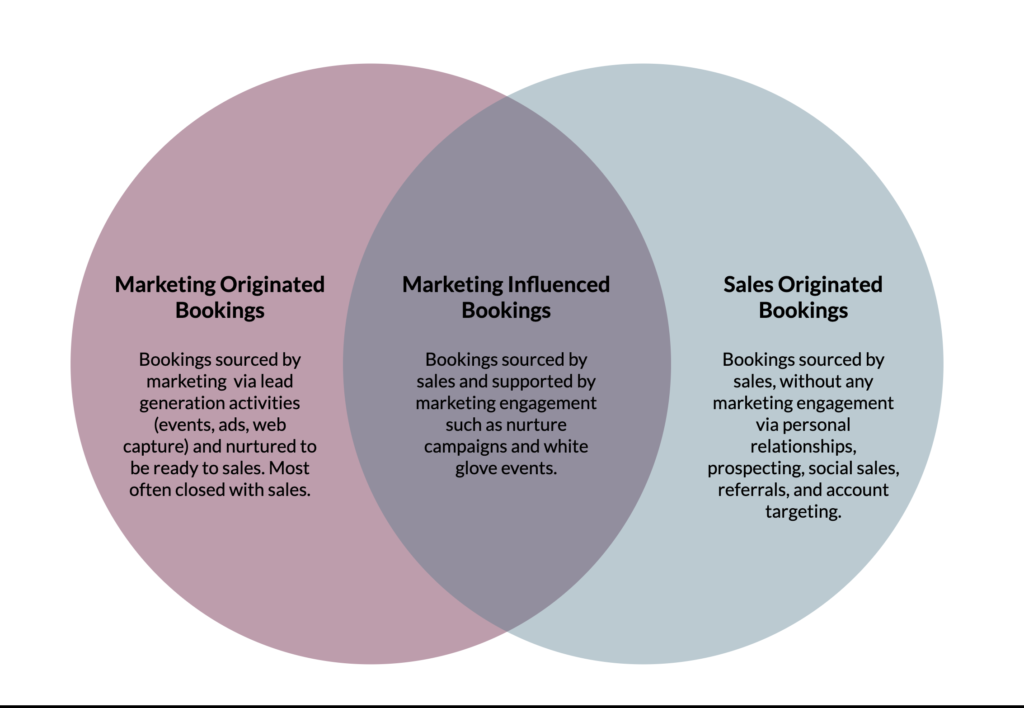Marketing metrics are a dime a dozen. Conversion rates, CAC, marketing contribution, visits, followers – where do you start? It’s incredibly easy for a marketing organization to become overwhelmed by data fatigue. This post is designed to help you understand what the metrics are, how they can help your program, and help you focus.
Note: In this post, I’ll focus on metrics that any B2B business can use, but some may apply better to SaaS businesses. It should be noted that the metrics you choose to measure your success will heavily depend on your business model.
Having a a lot of data is wonderful, but it’s not useful unless you have set up data capture properly, understand what you are looking for, and are able to leverage the data toward optimizing your marketing programs.
For most marketers, there are 3 categories of metrics that are important to be reporting on from a marketing program level:
- High level metrics that indicate business health (that are heavily influenced by marketing)
- The metrics that indicate marketing program success
- The metrics the everyday marketer will use to optimize their work based on their role
Below I’ll go through each category and provide an overview was to why they are important and how to leverage these metrics for success.
High level metrics that indicate business health
For B2B marketers who are in early to mid-stage start-ups, there’s a clear struggle for demonstrating results quickly. Often times, when start-ups are supported by investors, they will be asked to share metrics that aren’t necessarily (immediately) helpful to a B2B marketer – examples of those heavily marketing leaning metrics include:
- Blended CAC
- LTV
- CAC:LTV ratio
- Payback period
- Cost by source
This is not to say that these metrics are not completely important to a marketing program’s success, but for example, if you focus on Customer Acquisition Cost (CAC), for example, you lose how much value the customer/account may bring to the business, especially in B2B when contract values tend not to be a fixed cost, such as in B2C.
Let’s take a super simple example without too many variables:
- You sponsor an event for $50,000.
- You obtain 50 leads, of which 2 become customers
- Your CAC then is $25,000
Now, a CAC of $25,000 may mean different things to different businesses, but for most, that’s quite high, so it may seem like the marketing team is doing poorly to support the business. The number it doesn’t account for is deal size. What if of those 2 leads that became customers, 1 deal was for $1M, and another was for $5M? This is why B2B businesses need should beware of focusing too much on CAC and need to surround with additional KPI’s.
For those who are unfamiliar with what metrics investors are looking for, you should 100% familiarize yourself with these metrics (this is a great starting point from Andreessen Horowitz.) All too often we hear that marketers are not being given a seat at the leadership table – and my personal belief is that it’s because marketers aren’t tying their existing metrics back to what’s important to an investor.
*Note, I did not make this blended to include promotional costs or staffing resources for the sake of simplicity. If you’re not sure how to calculate CAC, this is a great resource. How you split out CAC can be blended, or broken out by organic versus paid. Make sure that’s clear with your Leadership and Finance team as to what numbers are important to them.
Metrics that indicate marketing program success
For the B2B marketer who is looking at how they are supporting their business, they are increasingly leveraging Marketing Contribution Models and their related metrics. Below are the metrics every B2B business should be looking at:
- Marketing Contribution (overall and by channel)
- Marketing Influenced Bookings
- Marketing Originated Bookings

- Average Return on [Marketing] Investment (ROMI)
- Marketing Spend % of Total Bookings
- Conversion rates between stages
- Sales cycle length
Now the question is HOW to use these metrics.
Leveraging a Marketing Contribution Model
A successful marketing program should evaluated on performance against business goals. This is where having a Marketing Contribution Model comes in.
Marketing contribution is the percentage of new bookings originated and influenced by marketing programming It includes all up-sell, cross-sell, and net new bookings.
To build out this model will take an entire blog post, so please stay tuned for that. Knowing how much the marketing team supports the entire business is important, so much of your programming needs to go towards reaching those goals. To work towards those goals, you’ll need to do analysis on channel optimization and make sure your planning supports hitting the goal. Then, to make your program even better – don’t forget to work on optimization of performance:
- Improving lead gen by channel
- Improving conversion rates between stages
- Improving time between stages (in effect shortening the sales cycle)
- Improving Return on Marketing Investment (ROMI)
- Improving Marketing Budget Spend as a percentage of Total Bookings
All those other metrics
Don’t fret, a lot of your other metrics don’t go away: they just aren’t reported at the highest level. Depending on your team and what your channel mix looks like, you will have to incorporate far more granular metrics in order to hit any larger marketing goals.
Examples include:
- Increase lead gen –> improve ad conversions, improve on page content with fixing bounce rates, and conversion on page, determine awareness (SOV, press hits), measure referral program efforts
- Improving conversion –> building nurture tracks and monitoring engagement
- Improving ROMI –> testing success of various types of events (live versus digital, which has very different costs)
- Improving content quality –> improving time on page, # of downloads, increase in downloads from target accounts
- Improving sales training to decrease sales cycle length –> certification of sales team in training (from Product Marketing or Enablement)
The granular data you’ll want to capture depends on the programming. Your focused teams should take the lead on determining which metrics are important – but everyone in the team needs to be fully aware of what is being measured and why.
Overall, when you decide on the metrics you need to share, they need to be focused AND agreed upon across the organization. Don’t forget – marketing is only successful as long as they work cross functionally across the business.
Header Photo by Isaac Smith on Unsplash
